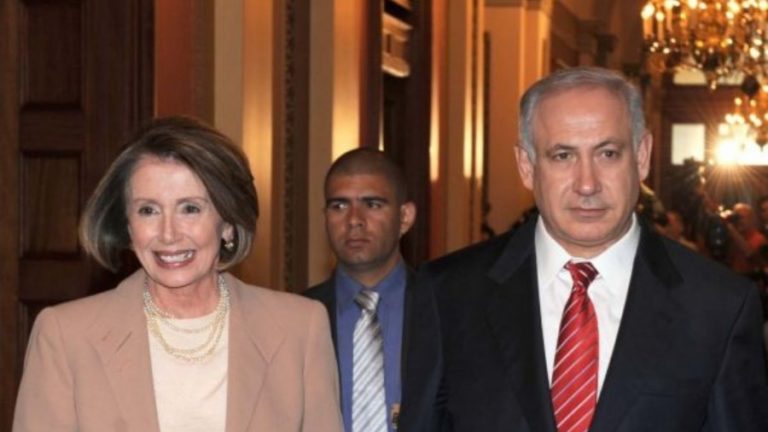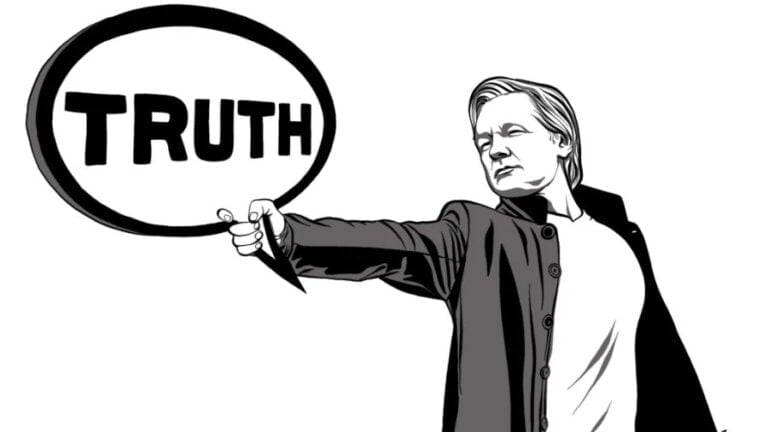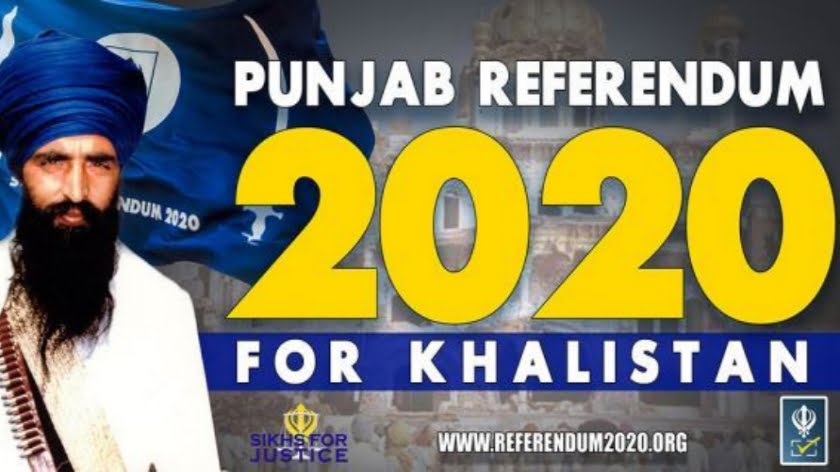Ordinary People by the Millions
Lunch with Tom Frank is a totally American experience. He’s a proud native of Kansas but far from a country boy: he got his doctorate from the University of Chicago and has written a series of influential books. He likes people, food, and telling it like it is. He teases the waiter, talks about a healthy salad, and then orders an overstuffed sandwich that he wolfs down as he dissects the increasingly crazed American political world. He’s not just a guy who happens to be bright and unpretentious and a lot of fun who has chosen to focus on American politics; he’s a political prophet who two decades ago saw what others could not glimpse and published What’s the Matter with Kansas?, a bestseller that told how and why the working-class folks of Kansas, once radical progressives, have moved farther and farther to the right in recent years. It was a profound book that foretold much about our current political woes.
In 2016, the sweet-faced Frank put a shiv into the heart of the Democratic establishment in Listen, Liberal, a devastating account of the failures of the party. In 2020 he broadened his canvas to tell the story of populism in the US and its failure to take hold of the nation’s institutions, framed as a critique of its enemies, in The People, No: A Brief History of Anti-Populism.
His message is more relevant than ever, as we and the world face a most uncertain immediate future. We got into it over lunch a few weeks ago and he agreed to answer my questions in an edited version presented here.
SEYMOUR HERSH: How did we get to the political fault line that gave us a Donald Trump? When did it all start?
THOMAS FRANK: I sometimes feel like it’s the story of my life, because it all began shortly after I was born in 1965, during the Vietnam era. Within a few years came the beginning of the culture wars and the eclipsing of the old liberal consensus. It’s important to remember two facts about it all: First, that every single battle in the culture wars has been presented to us over the years as a kind of substitute class war, as an uprising of ordinary people with their humble values, against the highbrow elite.
The other fact is that, at the same time the Republicans were perfecting the culture-war formula, the Democrats were announcing that they no longer wanted to be the party of blue-collar workers. They said this more or less openly in the early 1970s. They envisioned a more idealistic, more noble constituency out there in the form of the young people then coming off the college campuses plus the enlightened white-collar elite. In other words, the Democrats were abandoning the old working-class agenda at the same moment that the Nixon Republicans were figuring out how to reach out to those voters.
Put both of those strategies in effect for fifty years with slight evolutionary changes (The New Democrats! The War on Christmas!), drag the nation through various disasters for working people and endless triumphs for the white-collar elite, and you get the politics we have today.
SH: And why is it continuing, despite the constitutional horror of January 6, 2021?
TF: If the question is, why doesn’t the public care more about that dreadful event, I don’t really know the answer. I am amazed that Donald Trump is still standing as a politician after all the injuries he has inflicted on himself and the world. My suspicion is that the public doesn’t care more because they have learned to mistrust the news media and because the media’s constant beating of the January 6 drum sounds a lot like their constant beating of the Russiagate drum before that. It’s the problem of crying wolf, and then what do you do when the actual wolf shows up?
But the larger question—why do the upside-down politics of the last 50 years keep going?—is fairly easy to answer. It keeps going because it works for both sides. The Democrats now inhabit a world where they are moral superstars, people of incredibly exalted goodness. The media is aligned with them like we’ve never seen before, so are the most powerful knowledge industries, so is academia, so is the national security establishment. And so are, increasingly, the affluent and highly educated neighborhoods of this country. The Democrats are now frequently competitive with the Republicans in terms of fundraising, sometimes outraising and outspending the GOP, which is new and intoxicating for them.
So what if they are no longer the clearly dominant party, as they were from roughly 1930 to 1994. So what if their great victories are won by the tiniest of margins. All that constant flattery, all those contributions, all that money, these things feel good.
The Republicans, meanwhile, are also comfortable with their position, with their endless moral grievances about modern American culture and society. They haven’t lost all their big money funders, despite Trump’s antics, and in 2016 they learned how to win a presidential race in a country where plenty of political thinkers thought they, the GOP, would soon be extinct due to demographic change.
And beneath it all, the economy keeps going in the same directions it has since the late 1970s. More and more inequality, heaven on earth for the rich and the highly educated, plus the destruction of basically every locale that’s not a creative-class redoubt, and now American life expectancy itself is going in reverse. This is a formula for social breakdown, not healthy politics.
SH: Was a Trump or someone like him inevitable? Other candidates seem to be replicating his style to various degrees in the 2024 campaign.
TF: First of all, consider what makes Trumpism different from the culture-war game the Republicans have been playing for decades. Part of it is his enhanced vulgarity, his outrageous bigotry, his flaming contempt for insiders, his absurd hyper-masculinity, but these were always present before in some lesser form. What really distinguishes Trumpism is that he swiped certain traditional liberal positions—on trade and war, for example—to make his appeal to white working-class voters much, much more convincing.
Trump’s success was made possible by Democratic betrayal of those same voters. Every time some Democrat went before an audience of industrial workers and told them they had to get a college degree or learn to code, they brought this shit on. And while Biden has worked hard to reposition the Democrats with his middle-class-Joe persona, I doubt it will be enough. So, yes, Trumpism will continue. You will see more and more of it in the years to come. The old Republican Party is not coming back.
SH: Which candidate or president in recent history was most responsible for this turn?
TF: I think Bill Clinton was the pivotal figure of our times. Before he came along, the market-based reforms of Reaganism were controversial; after Clinton, they were accepted consensus wisdom. Clinton was the leader of the group that promised to end the Democrats’ old-style Rooseveltian politics, that hoped to make the Democrats into a party of white-collar winners, and he actually pulled that revolution off. He completed the Reagan agenda in a way the Republicans could not have dreamed of doing—signing trade agreements, deregulating Wall Street, getting the balanced budget, the ’94 crime bill, welfare reform. He almost got Social Security partially privatized, too. A near miss on that one.
He remade our party of the left (such as it is) so that it was no longer really identified with the economic fortunes of working people. Instead it was about highly educated professional-class winners, people whose good fortunes the Clintonized Democratic Party now regarded as a reflection of their merit. Now it was possible for the Democratic Party to reach out to Wall Street, to Silicon Valley, and so on.
Although there were hints of this shift before Clinton, he actually got it done, and his perceived success as president then made it permanent. This was something relatively new for a left party in the industrialized world, and it was quickly adopted by other left parties in other countries, most notably “New Labour” in the UK.
Unfortunately, this strategy has little to offer the people who used to be the Democratic Party’s main constituents except scolding. It merely assumes that they have, as the ’90s saying went, nowhere else to go.
SH: Is there no political learning curve?
TF: Look, I’ve been writing about these things since the early 2000s, with little effect. This is not because I’ve got the story wrong or something—everybody knows that the Republicans use workerist rhetoric and that the Democrats identify with the professional white-collar elite. These things may be unpleasant to consider, but they are undeniably true. The evidence for them is abundant and overwhelming.
Arguments like these have no effect because politics isn’t book learning. It’s a clash of grand forces, it’s industry and labor, it’s personalities and social movements, and it’s money, of course. Not to be too pessimistic about it, but I sometimes think the only lessons that get learned these days are the ones that flatter the powerful players involved. That’s a structural problem with our politics, and you can’t really blame the politicians themselves. They’re such nice people! Nice people floating pleasantly along on a river of history whose currents they don’t understand and don’t want to understand.
SH: A viable third party could be a corrective, no matter how poorly it performs early on. Why hasn’t a third party emerged?
TF: Let me say right up front that I wish we had a more fluid and responsive political system, one that allowed third parties. Having some option other than the Republicans and Democrats would be a fantastic thing in the situation we’re currently in. Among other things, it would help bring the two main parties to their senses.
However, there hasn’t been a really competitive national third party since the Populists of the 1890s. The Populists, who were a left-wing farmer-labor party, frightened the establishment of their day, and in the aftermath all sorts of measures were taken to ensure something like that never happened again. So there are now all sorts of structural barriers to a third party, like laws against fusion voting. Yes, we have seen third parties at the state level and also individuals who run for president like Ross Perot or Ralph Nader. But building a real third party is effectively impossible today. And I say this as a guy who is extremely sentimental about the 1890s Populists. (Building a social movement is different. That is eminently possible.)
What this means is that would-be reformers should probably aim for control of one of the two duopoly parties. Others have done it before. Since 1970, the Democratic Party has gone through change after change, always in the direction of the white-collar elite. The Republicans went through an earthquake with Trump. It can be done.
SH: Can the political degradation be stopped?
TF: In my last book I wrote about the two competing visions of progressive reform. The first is the familiar professionalism model: Put a bunch of really smart people in charge and have them fix everything. That’s the model of the Obama administration, and Clinton before that, and McNamara’s Pentagon before that, and going back to the ’50s before that. This model has all sorts of problems. For example, it assumes that those really smart people have no interests or biases of their own and that they will always act on behalf of the public. This is wrong in theory, and I think we can now say with confidence that it has failed in reality as well. When faced with its great challenge in the global financial crisis—the moment of maximum opportunity for change—this strategy gave us no daring or imaginative reforms but plenty of bailouts and rescues for the well-connected friends of the professionals in charge. Its great aspiration was the status-quo-ante.
Compare that to how Franklin Roosevelt met the similar challenge of the Great Depression. A whirlwind of activity. A complete reformation of the banking industry, not to mention just about every other industry as well. Regulation. Social Security. Public works. Antitrust. Soil conservation, for pete’s sake. On and on. FDR did not care if his old classmates hated him.
What’s the difference between the two episodes? Was it just that one crisis was worse than the other? Was it Roosevelt’s personal brilliance? Possibly, but there was also a different understanding of reform in those days, an understanding that emphasized mass social movements.
What I mean is this: All our great historical moments of progressive reform have been due to huge social movements, movements that enlisted ordinary people by the millions, not just the professionals in DC. I’m thinking of the farmers’ movement in the 1890s, the labor movement in the 1930s, and the civil rights movement and then the antiwar movement in the 1960s. Social movements succeed. They build and they change the intellectual climate and then, when the crisis comes, they make possible things like agrarian reform or the New Deal or the Civil Rights acts of the 1960s.
We need that kind of mass mobilization today. And we have had inklings of such a thing. Black Lives Matter seemed at first like it might become such a movement. And look at the union organizing and the strikes that are going on today. It is totally possible to imagine a kind of mass social movement that brings ordinary people together behind some larger vision of economic reform.
But I’d better stop before I say something optimistic and embarrassing.
SH: Is the media, and its lack of investigative reporting, also at fault?
TF: Yes, but that’s a huge subject on its own. The only thing I’ll say on that now is that, as newspapers shrivel and die all over America, the handful of surviving news organizations have become increasingly similar to one another, staffed with the same kind of well-graduated people who see everything the same way. Naturally enough, they read like propaganda. The whole professional-class revolution in the Democratic Party, for example, is something they see as obviously correct and wholesome. Instead of examining how that might have been a mistake, they enthusiastically police incorrect opinion about national events. This, even as vast parts of America now have almost no news coverage at all. It’s a strange feeling to be in a place like Kansas City, where you can look at Twitter and read all about whatever is riling the media set in DC, watch them try to get one another in trouble for saying the wrong thing, but at the same time encounter huge difficulties when you try to find out what is actually going on in the city around you. What I am describing is a recipe for disaffection and mistrust and breakdown.
SH: Is there any hope for a serious response to the climate crisis? Or a rollback of the American military budget and our 750 overseas military bases?
TF: Yes, of course. We have confronted environmental disaster before, on a much smaller scale, and our efforts on that front were popular and successful. I’m thinking of the Dust Bowl here. Also, being an empire rubs a lot of Americans the wrong way, with our democratic instincts.
But being “right” about these things is not enough. Counting on the experts to fix them is even greater folly. You will wait for years for our enlightened leadership class in DC to decide all on their own that imperialism is a bad idea, and I am sorry to say they are going to disappoint you every time. They like being an empire. They aren’t all that concerned about climate change either, except insofar as they can use it as a weapon against those damned Republicans.
I am convinced, on these issues as on nearly everything else, that the only way to proceed is from the bottom up. We must have a movement that orients the Democratic Party back toward the people. The top-down model will not succeed on these matters. They require the mass participation of ordinary people. Without that, I am afraid that nothing is possible.
SH: You’ve done yeoman’s work on the American political system. What’s your next target?
TF: Before I wrote about politics, I used to be interested in how our elites explained themselves to the world. Now I’m going back to that subject and studying the history of the words “creativity” and “innovation.” These are some of the most noble words in the English language, and yet what you find is that they are used again and again to rationalize all sorts of awful things. For example, the white-collar professional elite: they tell us they are in charge because they are “creative.” They are the “creative class,” even.
Industries also use this language, talking about “innovation” to disguise or camouflage the questionable things they do. Big Pharma is a well-known offender here, but the bunch that really intrigues me these days are defense contractors. They are always talking about how innovative they are. They build the most expensive weapons the world has ever seen. I mean, needlessly expensive. Is that what “innovation” means?
That’s what I’m trying to get to the bottom of.
Feature photo | Illustration by MintPress News







